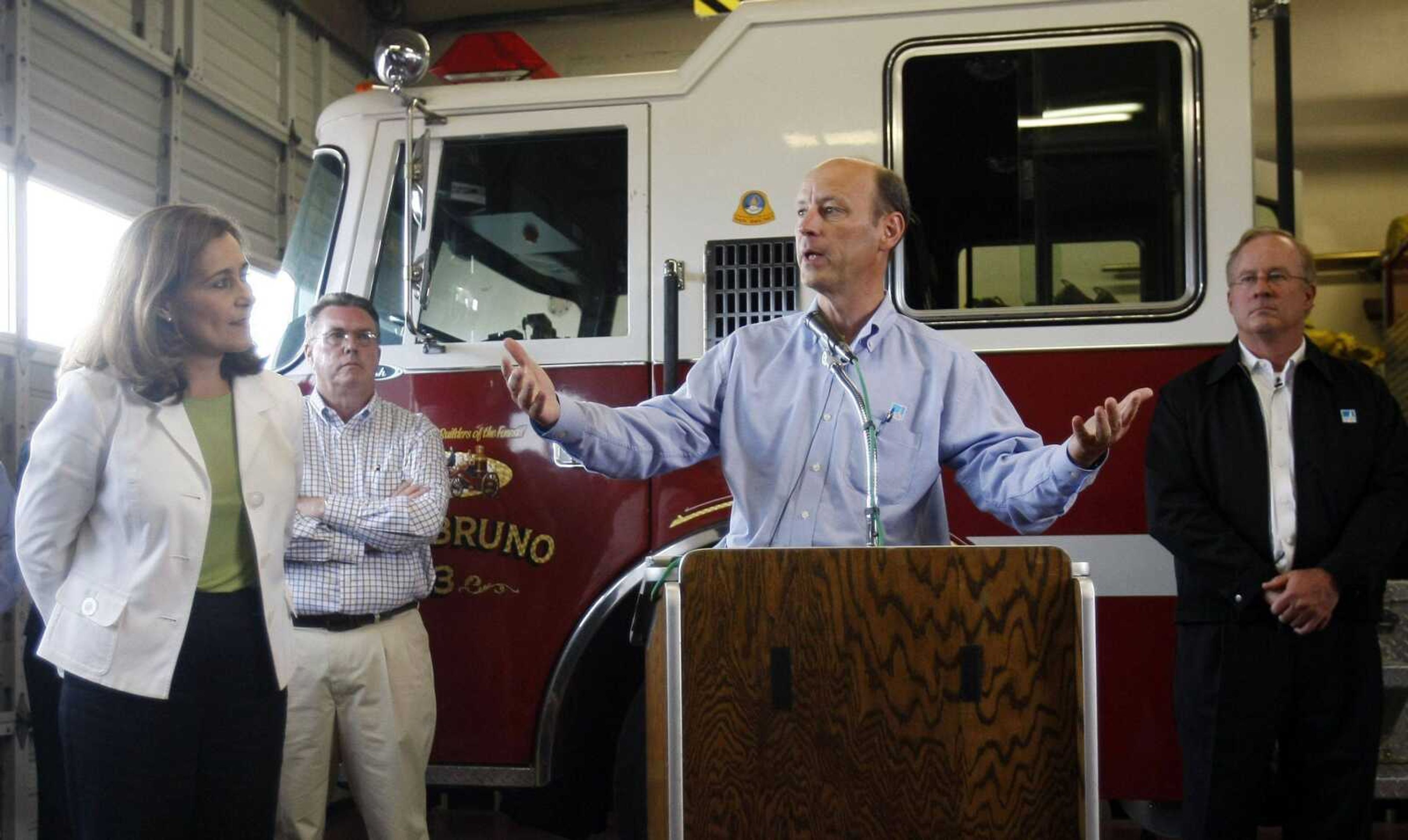Utility sets aside $100M fund for Calif. blast victims
SAN BRUNO, Calif. -- Pacific Gas and Electric Co. said Monday it was establishing a $100 million fund for victims of a huge gas pipeline explosion that left at least four people dead and destroyed 37 homes Thursday. The money was intended to help victims meet their day-to-day needs and would be provided with no strings attached, Chris Johns, president of PG&E, said...
SAN BRUNO, Calif. -- Pacific Gas and Electric Co. said Monday it was establishing a $100 million fund for victims of a huge gas pipeline explosion that left at least four people dead and destroyed 37 homes Thursday.
The money was intended to help victims meet their day-to-day needs and would be provided with no strings attached, Chris Johns, president of PG&E, said.
The company previously gave the city of San Bruno $3 million to help cover its expenses related to the blast, Johns said.
"It is very important that this community know that there are funds, enough funds, to be able to rebuild their lives and this community," Johns said.
The announcement came shortly after residents of homes destroyed or badly damaged in the blast left a private meeting with PG&E and city officials. The residents were told they would be receiving checks for as much as $50,000 this week to get back on their feet, said Bob Pellegrini, 48, whose home was leveled.
The checks would not preclude residents from taking further legal action against PG&E, Pellegrini said.
"The check is nice, but that's not what I need. I need a permanent home, a nice, safe place to live," said Bill Magoolaghan, 46, who also lost his house.
He was in San Francisco when his wife, who is eight months pregnant, called him screaming on the day of the blast. She fled barefoot from their home with their three young children.
The mood at the meeting was somber, especially when some attendees pressed officials to identify remains found in the damaged homes, Magoolaghan said. People who asked those questions were taken to a separate room by police.
San Bruno police chief Neil Telford referred all media questions on fatalities to the San Mateo County coroner's office.
The remains of at least four people have been found, and authorities have said four others were missing and at least 60 were injured, some critically. Two other people reported missing had been located, city spokeswoman Robyn Thaw said.
Coroner Robert Foucrault said investigators were still trying to confirm whether some of the remains were human.
Residents whose homes were yellow-tagged, meaning some damage, would have a chance to return to the dwellings, said Aaron Aknin, San Bruno community development director. Those residents would be accompanied by building inspectors and given one hour to retrieve possessions.
Homeowners whose houses suffered major damage or were destroyed would initially be allowed to tour the blast area by bus and take photographs to submit as part of insurance claims, Aknin said.
They could set up one-on-one appointments later in the week to see their damaged properties up close.
Evacuees who fled after the blast but whose houses were not damaged began returning home Sunday.
The explosion and ensuing fire destroyed 37 homes and damaged eight.
Meanwhile, federal investigators were probing why the line ruptured and the explosion sent a 28-foot segment of pipe onto a street some 100 feet away while creating a crater 167 feet long and 26 feet wide.
Crews crated up the pipeline segment along with two sections from either side of the ruptured segment to send to a federal lab in Washington, D.C., for further examination.
Christopher Hart, vice chairman of the National Transportation Safety Board, said investigators want to speak with anyone who smelled gas in the days leading to the blast, especially anyone who reported the problem to PG&E or any other officials. Hart said investigators have not yet seen any record of gas leak complaints.
"We're pursuing those rumors, and we've obtained records -- not only from PG&E but from other places where people might call. And so far, we have not been able to verify that anybody smelled gas and called it in," Hart said.
PG&E spokesman Andrew Souvall said there had been no gas leak complaints to the utility's call centers from the San Bruno neighborhood in the week before the blast.
Hart said investigators also want to talk to residents who might have noticed dead vegetation around the rupture spot, which can be a sign of a leak.
Connect with the Southeast Missourian Newsroom:
For corrections to this story or other insights for the editor, click here. To submit a letter to the editor, click here. To learn about the Southeast Missourian’s AI Policy, click here.










